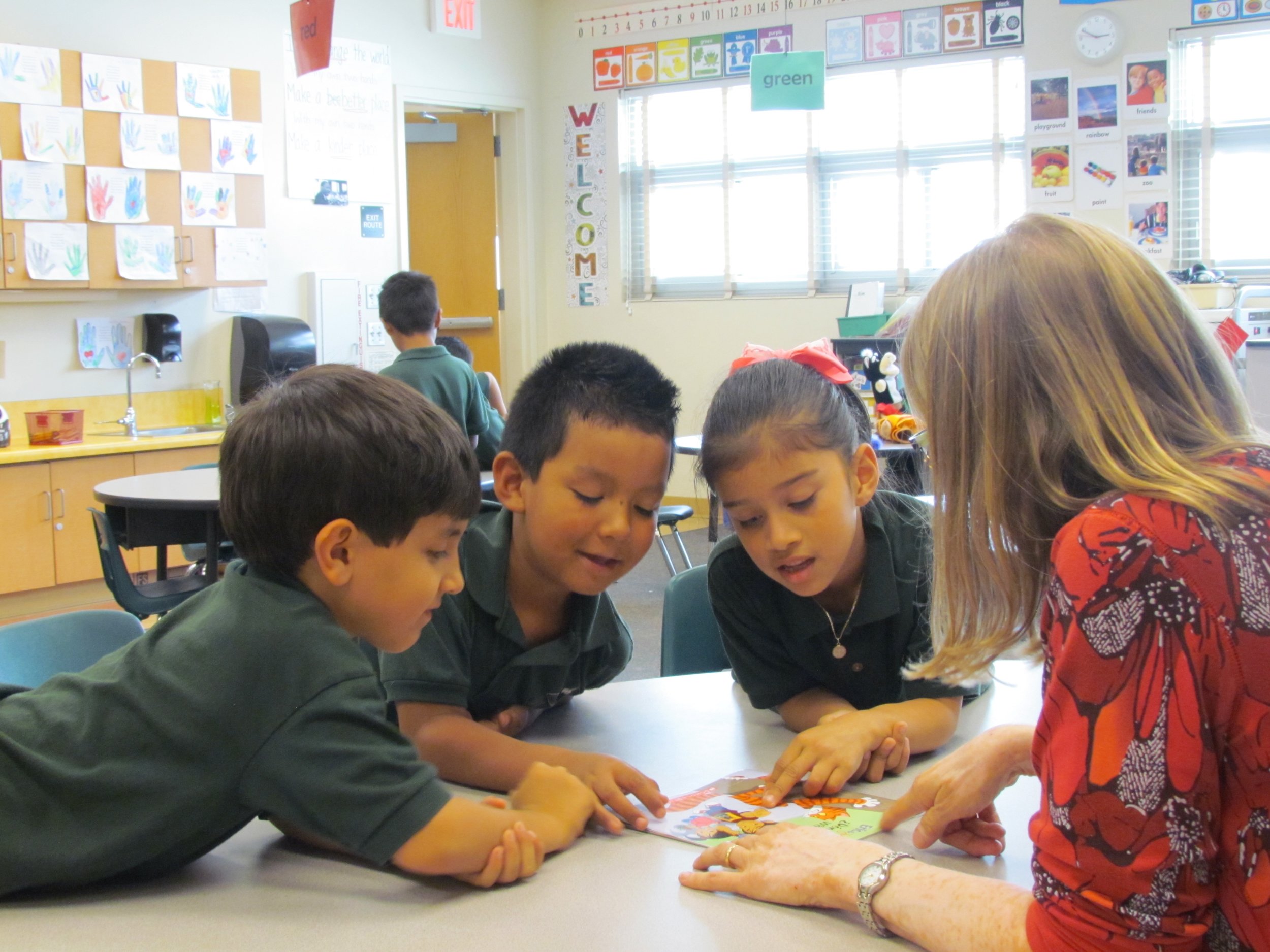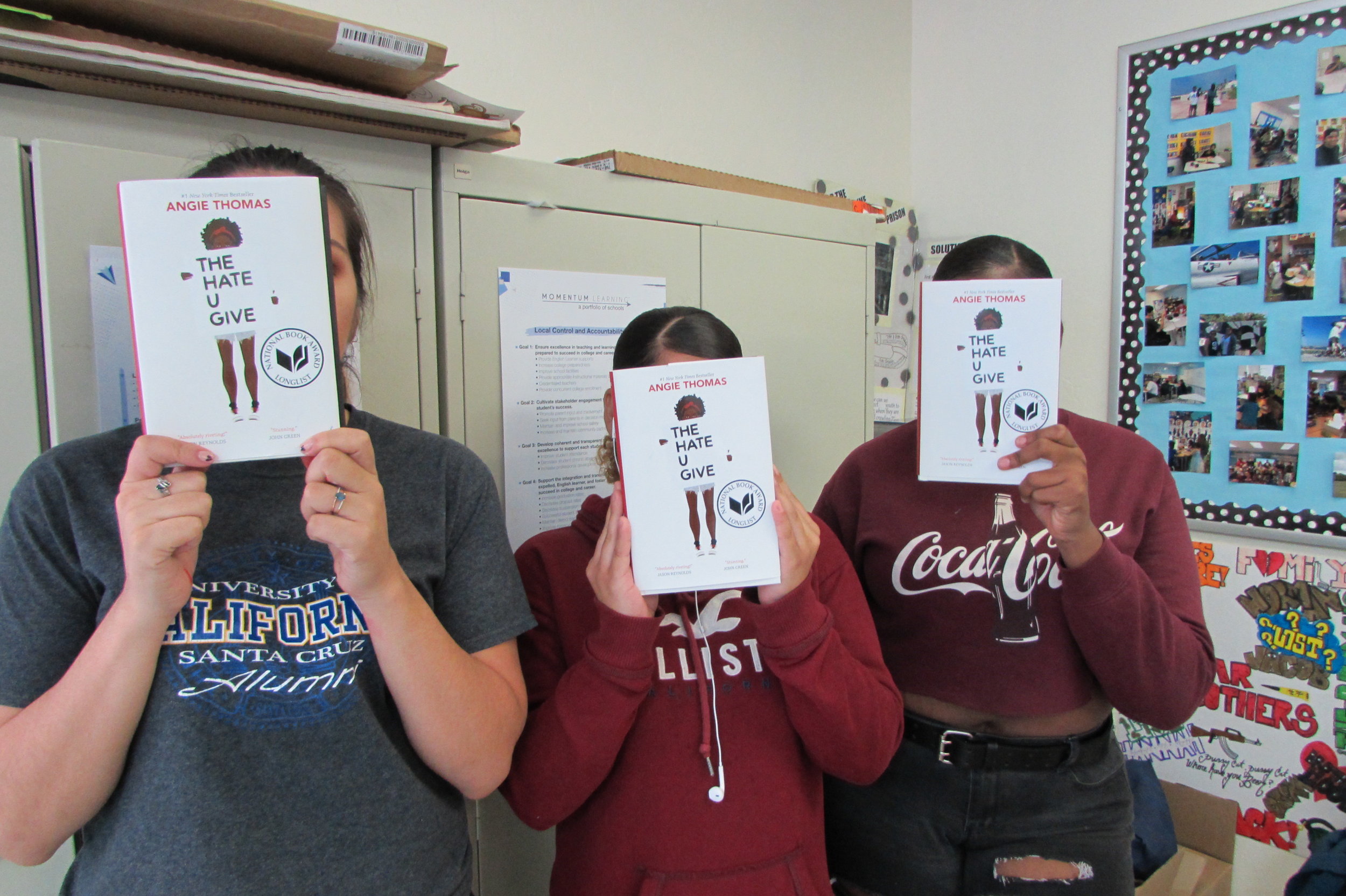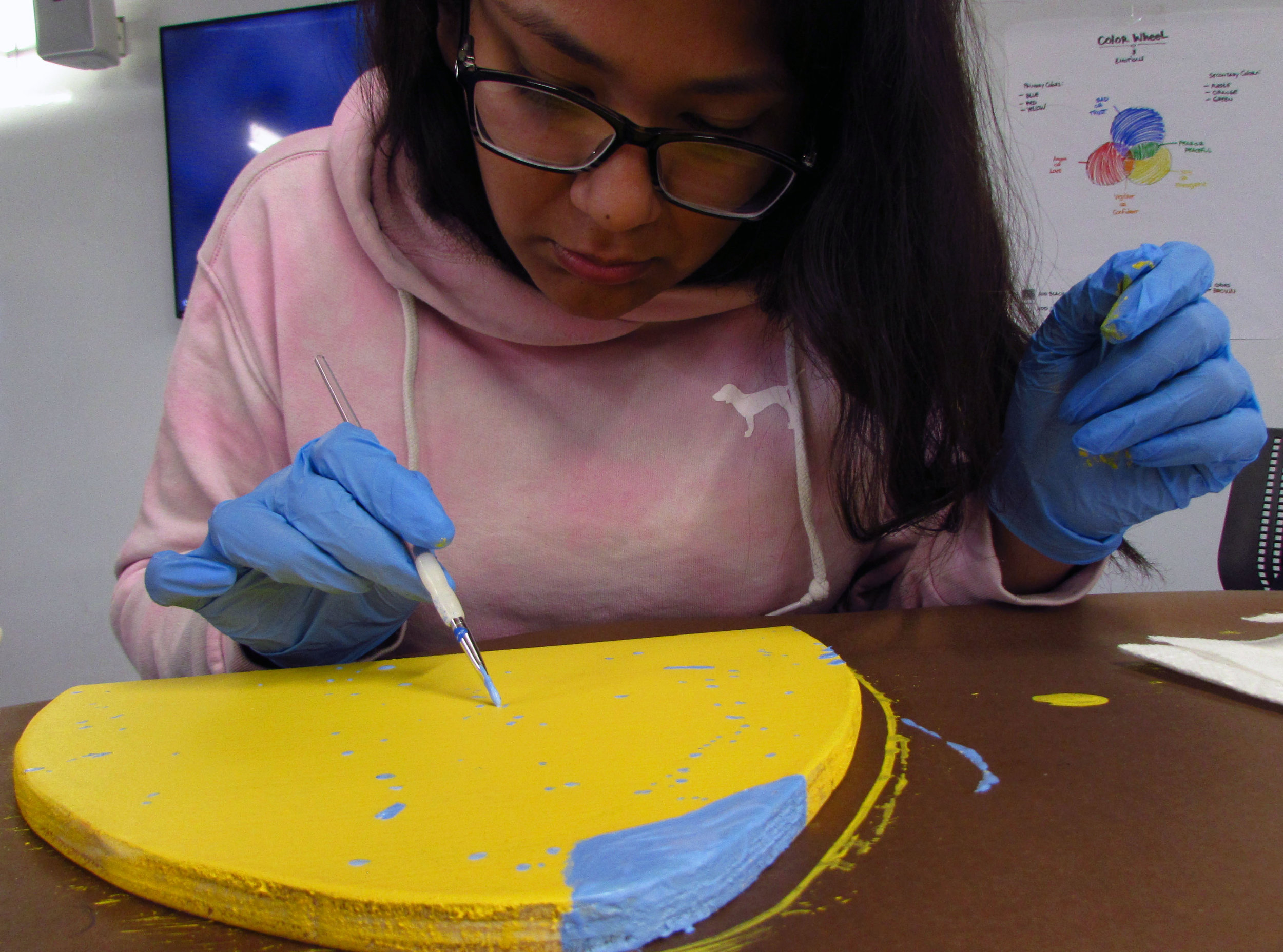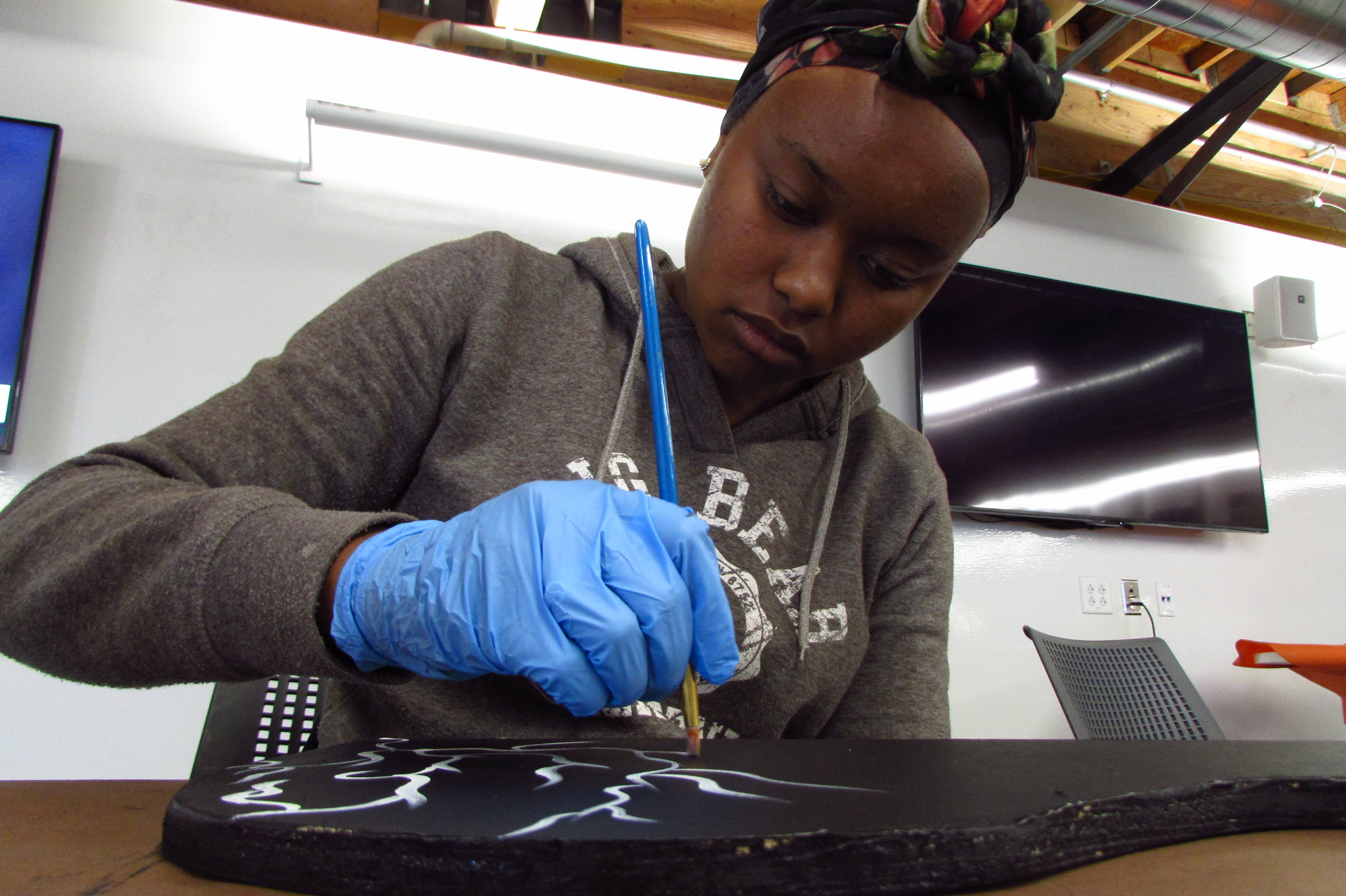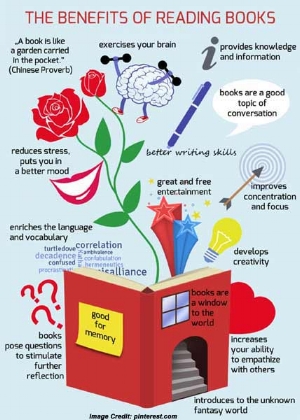An image of four students in one of our Read Aloud Program sessions looking through a book together.
In 2015, there were 4.8 million students, or 9.5%, of students in the United States public school system reported as English language learners. This means they are people who are going through school learning English in addition to their native language, often times without any additional support other than immersion. This statistic from the the National Center for Education Statistics has increased by over 25% since 2000. Furthermore, California has the highest percentage of English language learners, at 21% of students in public schools -- this is more than double the countrywide average.
These English Second Language (ESL) learners have their own individual sets of challenges, beyond those that monolingual students face. In an article on EverythingESL.net, Judie Haynes, an ESL teacher with more than 28 years of experience and several publications, discusses the various challenges she has seen bilingual students face in literary environments. A main challenge she referenced is the fact that literature is culture bound, meaning that there is a certain set of stories and literary genres that English speakers are expected to know from an early age. These stories are then built upon in later learning, leaving those that were born into a different culture lacking the background knowledge to understand the author’s intent. Some other challenges that can also be overlooked for ESL students is understanding our metaphors, idioms, and other forms of figurative language, that also tend to be culture bound. Beyond that, word order, syntax, and sentence structure differ in English compared to other languages.
ESL students also experience some amazing benefits to being bilingual. Not only is this a plus for future employment opportunities, but school-age children have a different mindset about learning language in general. In an article published for Lamar University about the benefits of ESL, the following cognitive tasks, among others, were cited to be easier for bilingual students: developing strong thinking skills, using logic, focusing, memory, and making decisions. The article also discussed that these students utilize a blocking technique to focus on choosing words from one language while blocking the matching word from the other language. This same blocking technique is employed to ignore distracting information, allowing them to have a stronger focus. This can also be translated into social situations, allowing bilingual students to block out what they already know and instead focus on two different dissenting perspectives to have a better understanding of an overall issue.
As a Southern California based non-profit, many of Words Alive’s participants have learned English as their second language. We work with these students to ensure that they are able to further their critical thinking and literary analysis skills while using their personal experiences to help relate to the books and deepen their understanding of the text.
If you are interested in funding or volunteering for our hands-on literacy programs, visit our website here for more details on our upcoming Author’s Luncheon & Fundraiser!
Sources:
https://nces.ed.gov/fastfacts/display.asp?id=96
https://degree.lamar.edu/articles/education/the-benefits-of-esl.aspx
http://www.everythingesl.net/inservices/challenges_ells_content_area_l_65322.php









